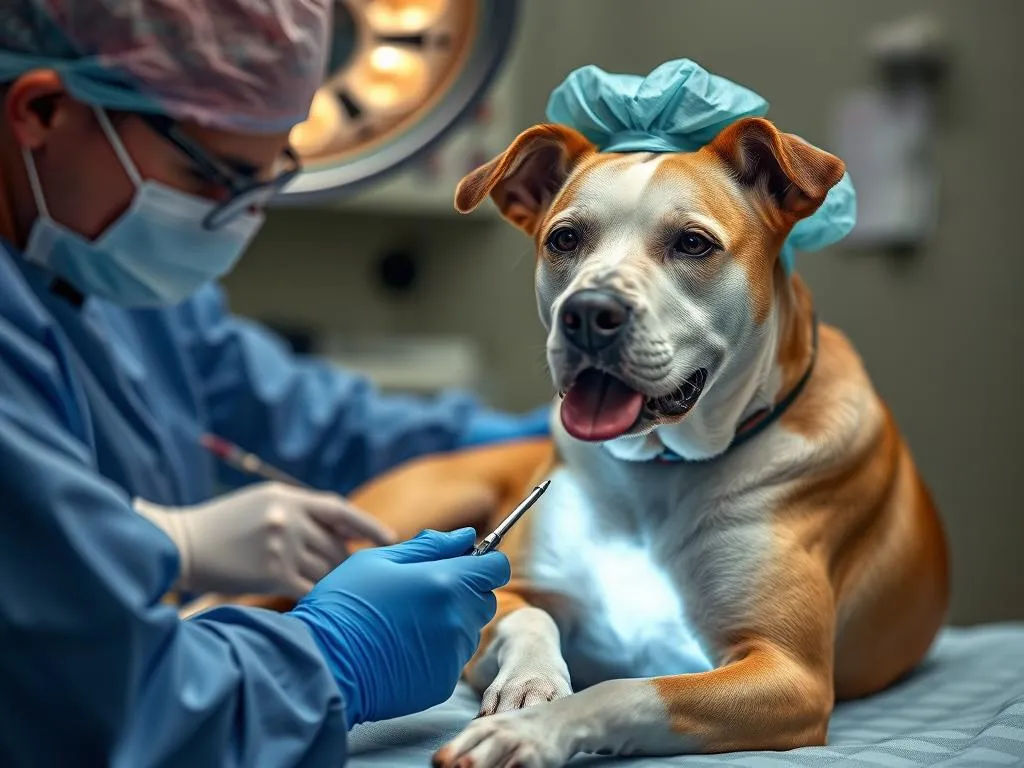
Introduction
Taking care of your dog’s health is one of the most important responsibilities of a pet owner. Just like humans, dogs can experience a variety of health issues throughout their lives. Among these, ACL (anterior cruciate ligament) injuries are quite common, especially in active breeds. Understanding the implications of such injuries, including treatment options and costs, is crucial for responsible pet ownership.
In this blog post, we’ll focus on a vital question: how much does dog ACL surgery cost? We’ll explore everything from the nature of ACL injuries in dogs to their treatment options, associated costs, and preventative measures. By the end of this article, you should have a well-rounded understanding of the financial aspects of dog ACL surgery and how to prepare for it.
Understanding ACL Injuries in Dogs
What is an ACL Injury?
An ACL injury refers to damage to the anterior cruciate ligament, which plays a crucial role in maintaining stability in a dog’s knee joint. This ligament connects the femur (thigh bone) to the tibia (shin bone) and is essential for most movements, including walking, running, and jumping.
Symptoms of an ACL injury often include limping, swelling in the knee area, and decreased activity. You may notice your dog favoring one leg or being reluctant to engage in their usual play. In some cases, your dog might exhibit signs of pain or discomfort when the affected leg is touched.
Causes of ACL Injuries
Several factors can lead to ACL injuries in dogs:
- Age: Older dogs are more susceptible to injuries due to wear and tear on their joints.
- Breed Predisposition: Certain breeds, such as Labrador Retrievers, Rottweilers, and Newfoundlands, are genetically predisposed to ACL injuries.
- Obesity: Excess weight puts additional stress on a dog’s joints, increasing the risk of injury.
- Trauma: Sudden, forceful impacts or awkward landings can lead to ACL injuries.
Recognizing these risk factors can help dog owners take preventive measures to protect their furry companions.
Diagnosis of ACL Injuries
Diagnosing an ACL injury typically involves a thorough physical examination by a veterinarian. They may perform specific tests, such as the “drawer test” to assess knee stability. If an ACL injury is suspected, further diagnostic methods like X-rays or MRI scans may be recommended.
It is essential to consult a veterinarian at the first sign of symptoms to ensure an accurate diagnosis and appropriate treatment plan.
Treatment Options for ACL Injuries
Non-Surgical Treatments
Not all dogs with ACL injuries require surgery. In some cases, conservative management can effectively alleviate symptoms and restore mobility. Non-surgical treatments may include:
- Rest: Limiting your dog’s physical activity allows the injured ligament to heal.
- Physical Therapy: Rehabilitation exercises can help strengthen the muscles around the knee joint.
- Medications: Anti-inflammatory medications can reduce pain and swelling.
Non-surgical options are often effective for dogs with mild injuries or those who are not highly active. However, if your dog’s condition does not improve or worsens, surgical intervention may be necessary.
Surgical Treatments
When conservative management isn’t sufficient, surgical options become essential. The main surgical procedures for ACL injuries include:
- TPLO (Tibial Plateau Leveling Osteotomy): This procedure involves changing the angle of the tibia to stabilize the knee joint.
- TTA (Tibial Tuberosity Advancement): This surgery moves the attachment point of the patellar tendon to provide more stability.
- Extracapsular Repair: This technique involves placing a suture outside the joint to stabilize it.
Each surgical option has its pros and cons, and the best choice depends on your dog’s specific condition, age, and activity level. Consulting with your veterinarian will help you make an informed decision.
Post-Surgery Recovery
Recovery from ACL surgery typically takes several months. The timeline can vary depending on the surgical method used and the individual dog’s health. During recovery, it’s crucial to follow your veterinarian’s recommendations for care, which may include:
- Rest: Continued limitation of physical activity.
- Follow-Up Visits: Regular check-ups to monitor healing and assess progress.
- Rehabilitation: Engaging in physical therapy to regain strength and mobility.
The success of the surgery largely depends on adherence to the post-operative care plan.
Cost Analysis of Dog ACL Surgery
Breakdown of Surgery Costs
When it comes to how much does dog ACL surgery cost, prices can vary widely based on several factors. On average, you can expect to pay between $1,500 and $4,000 for ACL surgery.
Factors influencing these costs include:
- Location: Veterinary costs can vary by region. Urban areas often have higher prices than rural areas.
- Veterinary Experience: A specialist or an experienced veterinarian may charge more for their services.
- Complexity of the Case: Additional complications or a second surgery can increase the overall cost.
Additional Costs to Consider
In addition to surgical fees, several other costs may arise during the treatment of an ACL injury:
- Pre-Surgery Diagnostics: X-rays or MRIs can range from $200 to $1,000, depending on the tests required.
- Post-Surgery Care: Medications, follow-up visits, and physical therapy can add another $200 to $1,000.
- Potential Complications: If complications arise, additional treatments or surgeries may be necessary, leading to higher expenses.
Before proceeding with treatment, ensure that you discuss all potential costs with your veterinarian.
Insurance Coverage for Dog ACL Surgery
Pet insurance can significantly help mitigate the costs associated with dog ACL surgery. When considering pet insurance, look for policies that specifically cover orthopedic issues, including ACL injuries.
Things to consider include:
- Waiting Periods: Most policies have waiting periods before coverage begins, especially for pre-existing conditions.
- Coverage Limits: Ensure the policy covers a sufficient amount for surgical interventions.
- Deductibles and Co-pays: Understand your financial responsibility before enrolling in a plan.
Having pet insurance can provide peace of mind and financial support when your dog needs surgical intervention.
Financial Planning for Dog ACL Surgery
Budgeting for Dog Health Care
Planning for unexpected health expenses is crucial for any dog owner. Here are some tips for budgeting effectively:
- Estimate Costs: Research average costs associated with potential health issues, including ACL injuries.
- Create an Emergency Fund: Having a dedicated fund for pet health care can alleviate financial stress when unexpected expenses arise.
Financing Options for Pet Surgery
If you’re faced with the prospect of surgery and find yourself short on funds, several financing options may be available:
- Payment Plans: Some veterinary hospitals offer payment plans that allow you to spread out costs over time.
- Credit Options: Specialized credit options for pet care can help cover expenses upfront, allowing you to pay off the balance later.
Weigh the pros and cons of each option and choose the one that best fits your financial situation.
Preventative Measures for Dog ACL Injuries
Maintaining a Healthy Weight
One of the best ways to prevent ACL injuries is to maintain a healthy weight for your dog. Excess weight increases stress on joints, making them more susceptible to injury. Consider the following tips:
- Balanced Diet: Provide a well-balanced diet tailored to your dog’s age, breed, and activity level.
- Regular Exercise: Engage your dog in regular physical activity to maintain a healthy weight and strong muscles.
Regular Vet Check-Ups
Routine veterinary visits are essential for early detection of health issues. Regular check-ups can help identify any underlying problems before they escalate. Ensure your dog receives:
- Vaccinations: Keeping vaccinations up-to-date can prevent various health issues.
- Wellness Exams: Regular wellness exams can help catch potential issues early, including joint problems.
Safe Exercise Practices
To keep your dog active while minimizing injury risk, consider the following guidelines:
- Warm-Up and Cool Down: Just like humans, dogs benefit from warming up before exercise and cooling down afterward.
- Avoid High-Impact Activities: Be cautious with high-impact activities, especially for older dogs or those with existing joint issues.
Incorporating safe exercise practices can help strengthen your dog’s joints and muscles, reducing the risk of ACL injuries.
Conclusion
Understanding dog ACL injuries and their treatment options is crucial for every pet owner. The financial aspect of dog health care, particularly regarding how much does dog ACL surgery cost, is an essential consideration that requires careful planning. By being proactive in your dog’s health care—through preventative measures, regular veterinary visits, and financial planning—you can help ensure your furry friend stays healthy and happy. Prioritize your pet’s health and well-being today, and you’ll be better prepared for any health challenges that may arise in the future.









